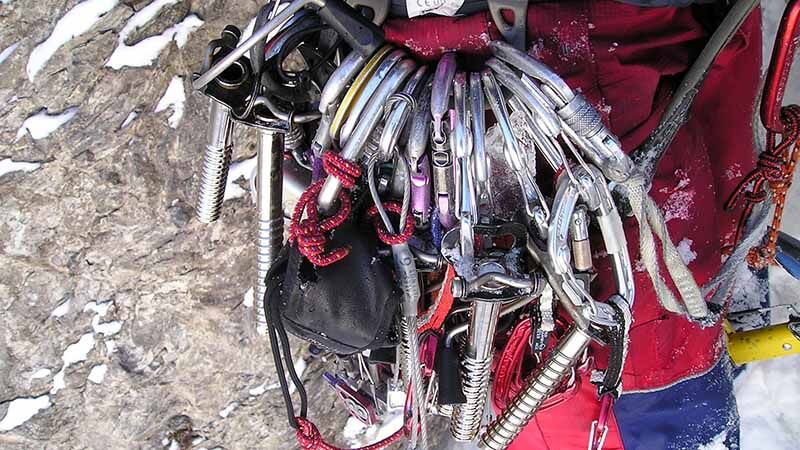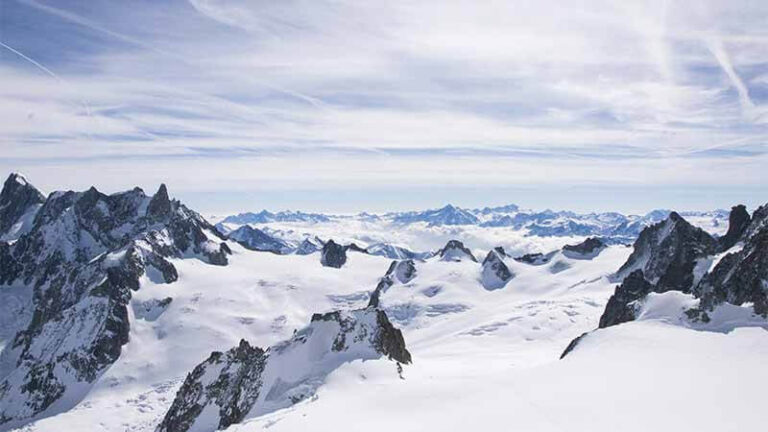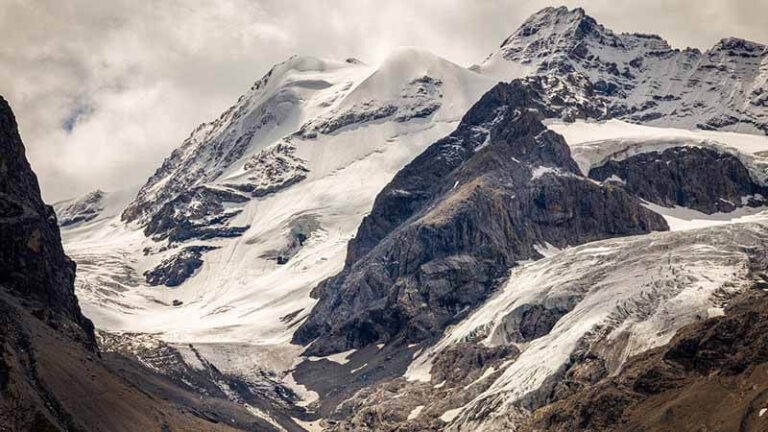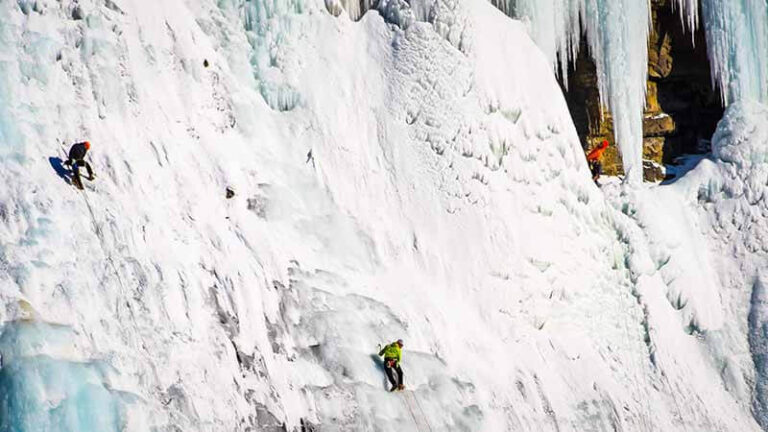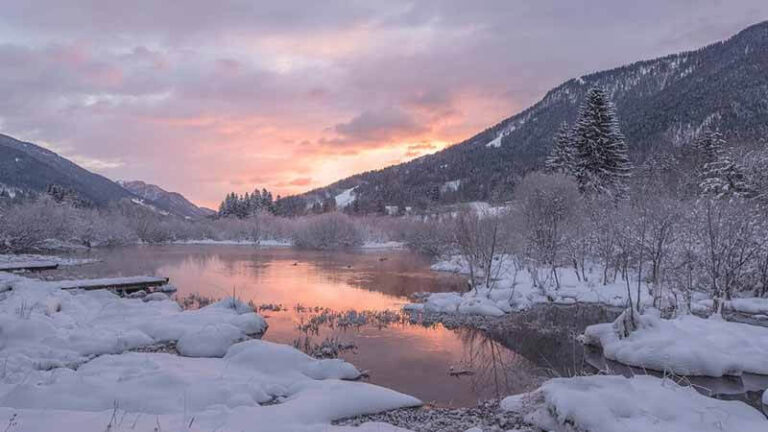What Equipment is Needed for Ice Climbing?
Climbing frozen waterfalls, ice-covered cliffs, and other frozen structures is a demanding and entertaining activity. To properly cross the snowy terrain, particular skills, physical fitness, and specialized equipment are required. Natural and man-made structures, such as frozen waterfalls, ice-covered mountains, and indoor ice walls, can be used for ice climbing.
Ice climbing requires the use of proper equipment because it might be dangerous without it. Ice climbing is dangerous because of the unpredictability of ice formations, weather conditions, and other environmental factors. The correct equipment can help climbers cross the ice safely and reduce these risks. Ice climbers must be properly equipped to avoid falls, slips, and other hazards related to the sport.
Ice climbing requires specialized equipment designed to help climbers grip the ice and protect themselves from falls. A climbing harness, helmet, ice climbing boots, crampons, ice axes, ice screws, carabiners, quickdraws, ropes and slings, and belay devices are all required.
A climbing harness is essential for ice climbers because it keeps them tied to the rope and distributes weight during the ascent. A helmet is required to protect one’s head against falls or falling objects. Ice climbing boots are custom-made to give optimal support and warmth while keeping your feet dry.
Crampons are metal spikes attached to footwear that enhance traction on the ice. Ice axes are used to offer stability and grip on the ice while climbing. Ice screws are used to secure the rope to the ice, increasing safety throughout the climb.
Ropes and slings are used for anchoring and protection, while carabiners and quickdraws are utilized to link the rope to the harness. Finally, belay devices aid in the control of the rope during a climb, allowing the climber to cross the ice safely.
Ice climbers require suitable gear and protection in addition to the equipment required for climbing. Clothing layering, an insulated jacket and pants, gloves and mittens, gaiters and waterproof pants, sunglasses and goggles, sunscreen, and lip balm are all included.
Climbers must also carry a backpack, a water bottle or hydration system, a headlamp, a first aid kit, navigation gear, and a personal locating beacon or satellite phone.
Ice Climbing Equipment
Ice climbing necessitates the use of specialist equipment in order to safely cross the icy terrain. Here are some of the most important pieces of Ice climbing gear:
Climbing harness
A climbing harness is an essential piece of gear that keeps the climber tied to the rope throughout the ascent. The harness appropriately distributes the climber’s weight and ensures a comfortable fit. A climbing harness should be easily adjustable, long-lasting, and comfortable to use.
Climbing helmet
Climbers must wear climbing helmets to protect their heads from falling ice and other risks. A helmet should be snugly fitting and have adequate ventilation to prevent overheating.
Ice climbing boots
Ice climbing boots are made to provide the most support, warmth, and traction on the ice. To keep the feet dry, the boots should have a sturdy sole, a warm insulated inside, and a waterproof outer. The boots should also feature a stiff front tip for extra traction on the ice.
Crampons
Crampons are metal spikes that attach to the bottom of ice climbing boots to enhance traction. They are available in a variety of shapes and sizes, depending on the terrain and climbing technique.
Ice axes
Ice axes are used to offer stability and grip on the ice while climbing. They vary in length and shape depending on the terrain and climbing method.
Ice screws
Ice screws are used to secure the rope to the ice, increasing safety throughout the climb. They are embedded in the ice and used to tie the rope to a sturdy anchor point.
Carabiners and quickdraws
To link the rope to the harness, carabiners and quickdraws are utilized. They come in a variety of sizes and forms and are composed of lightweight, long-lasting materials.
Ropes and slings
During the climb, ropes and slings are employed for anchoring and protection. They must be sturdy, long-lasting, and resistant to cold and abrasion.
Belay devices
Belay devices aid in the control of the rope during a climb, allowing the climber to cross the ice safely. They come in a variety of shapes and sizes based on the terrain and climbing technique.
Clothing and Protection for Ice Climbing
Ice climbing is a challenging sport that necessitates the use of appropriate clothing and equipment in order to be warm, dry, and safe in the harsh and unpredictable winter weather. Here are some basic Ice climbing clothes and protection items:
Layering system for clothing
Layering is essential for remaining warm and dry while ice climbing. A base layer, an insulating layer, and an outer layer comprise the layering system. The base layer wicks moisture away from the body, the insulating layer keeps you warm, and the outer layer keeps wind, rain, and snow at bay.
Insulated jacket and pants
Insulated jackets and pants give warmth and weather protection. To keep the body dry and warm, they should be lightweight, breathable, and waterproof.
Gloves and mittens
Gloves and mittens are vital for keeping hands warm and dry while retaining dexterity. They should be insulated, waterproof, and comfortable to wear when handling ropes and equipment.
Gaiters and waterproof pants
Snow, ice, and water are all protected by gaiters and waterproof pants. They should be composed of waterproof and breathable materials, and they should fit securely around the ankles to keep snow and debris out.
Sunglasses and goggles
Sunglasses and goggles shield the eyes from glare from the sun and snow, as well as flying debris. They should be polarized and offer a high level of UV protection.
Sunscreen and lip balm
Lip balm and sunscreen protect the skin from sunburn, windburn, and chapping. They should have a high SPF rating, be waterproof, and last a long time.
Ice Climbing Accessories
In addition to the fundamental equipment, ice climbers must carry a variety of extras for safety and comfort when climbing. Here are some necessary Ice climbing accessories:
Backpack
A backpack is essential to carry all of the climbing equipment and accessories. It should be comfortable to wear and have enough room for the equipment and other personal stuff.
Water bottle or hydration system
Hydration is essential when ice climbing and climbers must bring enough water to stay hydrated. A water bottle or hydration system should be long-lasting, leak-proof, and simple to operate.
Headlamp
A headlamp is required for climbing and navigating in low-light settings. It should have a long battery life, be lightweight, and be resistant to cold and damp weather.
First aid kit
Any outdoor activity, including ice climbing, requires a first-aid kit. Bandages, antiseptic wipes, pain medications, and other necessary goods should be included in the kit.
Navigation tools
Backcountry navigation requires navigation aids such as a map and compass or GPS device. They must be dependable, waterproof, and simple to operate.
Personal locator beacon or satellite phone
In an emergency, a personal locating beacon or satellite phone can be used to summon assistance. These devices should be light, waterproof, and have a long battery life.
Conclusion
It is critical to have sufficient training and expertise, as well as the necessary equipment. Ice climbing is a difficult and dangerous sport that necessitates a high level of ability, expertise, and experience.
Before attempting to climb on your own, it is strongly advised that you attend a course or hire a guide to learn the necessary methods, safety precautions, and emergency procedures.
Some safety reminders and tips for new ice climbers include:
- Climb with a companion and use the buddy system at all times.
- Before beginning the climb, check the weather and avalanche conditions.
- Be aware of your surroundings, hazards, and possible hazards.
- Use suitable ice climbing techniques, such as ice screws and anchors for protection, as well as proper belaying techniques.
- In case of an emergency, carry a first-aid kit, personal locating beacon, or satellite phone.
- Prepare an emergency plan and share it with your partner before beginning the climb.
To summarize, ice climbing is a thrilling and gratifying sport that necessitates correct equipment, training, and safety precautions to assure a safe and happy experience. Ice climbing may be a fascinating activity with the proper preparation, equipment, and knowledge.

